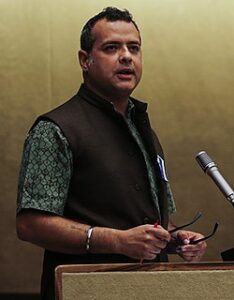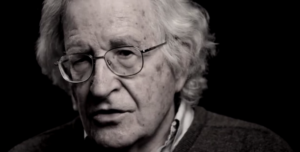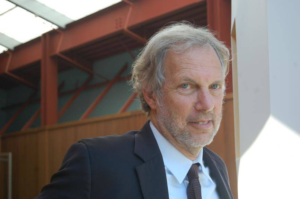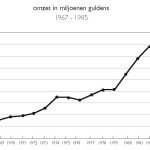Why Turkey And Hungary Are Currently Blocking Sweden From Joining NATO
On July 11-12, 2023, the 31 members of the North Atlantic Treaty Organization (NATO) will hold their annual summit in Vilnius, Lithuania. To prepare for the summit, NATO Secretary General Jens Stoltenberg met with U.S. President Joe Biden to discuss the agenda for the summit. They spoke about the importance of Western support for Ukraine “for the long haul” and Stoltenberg told Biden that “he looks forward to welcoming Sweden as a full member of NATO as soon as possible.”
In their joint press conference on June 13, neither Biden nor Stoltenberg mentioned anything about Ukraine’s membership of NATO, although both hoped that Sweden would become a member, “hopefully….very shortly,” as Biden said. Despite noises in the German Bundestag from Christian Democratic members—such as urging by Roderich Kiesewetter—to bring Ukraine into NATO, there seems to be no appetite for any such move at present, least of all from German Chancellor Olaf Scholz who is being very cautious. Germany is wary of allowing Ukraine into NATO during a war, but has no problem—in principle—with Ukraine’s membership in NATO. With Sweden, the chessboard is far more complicated.
Finland Joins, but Not Sweden
In May 2022, Finland and Sweden applied to join NATO, a military alliance that had—at that time—consisted of thirty countries (the most recent entrant being North Macedonia in 2020). At that time, Stoltenberg said of the applications, “It is great to see you both.” Indeed, it was widely expected that these applications would be fast-tracked and that all four Scandinavian states would be within the military camp of NATO. Norway and Denmark were both founder members in 1949 (Denmark’s accession was particularly necessary so that the U.S. could build a vast base on Danish colonized Greenland—Pituffik Space Base, the northernmost U.S. military base—in 1951, displacing the local Inuit population).
Just short of a year later—on April 4, 2023—NATO welcomed Finland into the alliance. “Joining NATO is good for Finland,” said NATO’s Stoltenberg. “It is good for Nordic security, and it is good for NATO as a whole.” Finland shares a very long (832-mile) border with Russia, the longest border of any European Union or NATO state. By joining NATO, Finland has doubled the NATO-Russia border. Finland began to build a border fence along the “riskiest areas,” notably where Russian migrants might try to cross over. Social media in Finland mocked pictures released by the Border Guard of the fence, saying that it was just about useful for stopping horses; the “fence is not for horses,” responded Lieutenant Colonel Jukka Lukkari.
At the ceremony to welcome Finland into NATO, Finland’s President Sauli Niinistö said that his country’s membership is “not complete without Sweden.” Standing beside him, NATO’s Stoltenberg said, “I look forward to also welcoming Sweden as soon as possible.”
Why was Sweden not taken into the Western military alliance? In 1949, when NATO was established, the principle of decision-making adopted by the members was that of “consensus,” which means that all countries must agree to any decision; this consensus decision-making applies particularly to the question of membership. Two NATO members—Hungary and Turkey—ratified Finland’s entry into NATO but blocked that of Sweden. That they allowed NATO to welcome Finland, which—unlike Sweden—has a direct border with Russia, shows that it is not the war in Ukraine that troubles these two countries. They have other problems, directly with Sweden.
The Sweden Problem
At a press conference in Washington with U.S. Secretary of State Antony Blinken and NATO’s Stoltenberg, Vivian Salama of the Wall Street Journal asked, “Are you concerned that Turkey is increasingly becoming a disruptive ally?” Both Blinken and Stoltenberg ducked the question, which led Kylie Atwood of CNN to ask directly about NATO membership for Sweden. Stoltenberg obliquely noted Turkey’s concerns regarding the presence of the Kurdistan Workers’ Party (PKK) in Sweden. “All NATO allies are of course ready to sit down and address those concerns, including the threats posed to Turkey by PKK,” Stoltenberg said.
In 2009, when Sweden held the presidency of the Council of Europe, then-Prime Minister Fredrik Reinfeldt promised to shepherd Turkey into the European Union. Relations, at that time, were robust. Turkey’s war in recent years on the Kurdish minorities in the southeast of the country and in northern Syria roused the exiled Kurdish community in Sweden. Protests in Stockholm have annoyed Turkish President Recep Tayyip Erdogan, who has repeatedly called in the Swedish ambassador to Ankara to complain about these protests. When an effigy of Erdogan was burnt by the Rojava Committee of Sweden, Sweden’s foreign minister Tobias Billström wrote on Twitter, “Portraying a popularly elected president as being executed outside City Hall is abhorrent.” This statement was not sufficient. Sweden’s Prime Minister Ulf Kristersson said that his country had weak “anti-terror” laws and that his government was in talks with Ankara to see what could be done.
On his way to Azerbaijan on June 14, Erdogan dismissed the possibility that Sweden would be allowed to enter NATO this July.
In May 2023, Hungary’s president Viktor Orban went to Doha to attend the Qatar Economic Forum. He was asked why his ruling alliance, Fidesz-KDNP, which dominates the parliament (135 out of 199 seats), refuses to ratify Sweden’s entry into NATO. Orban bluntly said that he would not back down because “Sweden unfairly expresses a damaging opinion about the situation of democracy and the rule of law in Hungary.” Sweden is not alone in these concerns, which have been made very strongly by thirteen Hungarian intellectuals in a powerful book (“Igazságosság—demokrácia—fenntarthatóság”) last year.
Orban was very upset with Sweden for its support of a European Union parliamentary report from September 2022 that described the Hungarian political system as “a hybrid regime with parliamentary autocracy.” Unless Sweden revokes this attitude, Budapest says, it will not allow it to join NATO.
Where Are The World’s Water Stresses?

John P. Ruehl
Around the world, significant issues are negatively impacting water security. While the situation appears dire, cooperation initiatives show some signs of relief.
In May 2023, the Arizona Department of Water Resources imposed restrictions on the construction of new housing in the Phoenix area, citing a lack of groundwater. The decision aims to slow population growth in one of the fastest-growing regions in the U.S. and underlines the dwindling water resources in the drought-stricken southwest.
As water levels in the Colorado River have declined, the states dependent on it (Arizona, California, Colorado, New Mexico, Nevada, Utah, and Wyoming) are increasingly at odds over how to distribute the declining supply.
The U.S. is not alone in contentious domestic debate over water supplies. Australian states have constantly quarreled over water rights across the Murray-Darling Basin. Disruptions to water supply or perceived misuse can cause immediate social unrest, and countries like Iran and France have seen violent protests regarding water recently.
Constant and affordable access to fresh water is recognized as a basic human right by the UN. And in addition to providing a foundation for life, fresh water is also crucial for industry and manufacturing, energy production, agriculture, sanitation, and other essential societal functions.
But around the world, its availability is threatened. Desertification, climate change, man-made water diversion, dam building, pollution, and overuse have seen rivers, lakes, and aquifers dry up. Since 2000, the world has added almost 2 billion people, putting further strain on global water infrastructure and supplies.
Poor water management and infrastructure also play a major role in water scarcity around the world. In Iraq, up to 14.5 percent of the country’s water is lost to evaporation and two-thirds of its treated water is lost due to leaks and poor infrastructure. Up to 25 to 30 percentof South Africa’s water is lost to leaks, while even in many industrialized countries, up to 15 to 20 percent of water supply is lost.
Inequality can also exacerbate water stress. Amid Cape Town’s water shortages in recent years, 14 percent of the population has been found to be responsible for more than half of the freshwater use in the city. Across Africa, one in three people already faces water scarcity, where “the availability of natural hygienic water falls below 1,000 m3 per person per year.”
On top of government control of water supply and infrastructure, multinational companies like Nestlé S.A., PepsiCo, Inc., the Coca-Cola Company, and the Wonderful Company LLC play a huge role in the global water industry. In 2013, former Nestlé CEO Peter Brabeck-Letmathe was forced to backtrack after a 2005 interview resurfaced where he stated it was “extreme” that water was considered a human right.
However, water privatization has increased significantly over the last few decades. In 2020, Wall Street allowed water to begin trading as a commodity, and today, “farmers, hedge funds and municipalities alike are now able to hedge against—or bet on—future water availability in California.” Monetization has even seen countries like Fiji, the world’s 4th-largest water exporter in 2021, face water supply shortages over the last few years.
Tap water remains drinkable only in certain countries, but fears of contamination can occur rapidly and incite alarm. After thousands of gallons of a synthetic latex product spilled into the Delaware River in 2023, Philadelphia authorities shut down a nearby water treatment plant. While it was ultimately deemed that tap water was still safe to drink, government warnings and alarm on social media led to panic-buying of water.
Contamination can also lead to longer-term damage to public faith in water infrastructure. After heightened levels of lead were found in Flint, Michigan’s drinking water in 2014 (together with the tepid government response), the local population remained hesitant to resume drinking it even after it had been declared safe.
Can China And The United States Establish Mutual Respect To Lessen Tensions?
On June 3, 2023, naval vessels from the United States and Canada conducted a joint military exercise in the South China Sea. A Chinese warship (LY 132) overtook the U.S. guided-missile destroyer (USS Chung-Hoon) and speeded across its path. The U.S. Indo-Pacific Command released a statement saying that the Chinese ship “executed maneuvers in an unsafe manner.” The spokesperson from China’s Ministry of Foreign Affairs, Wang Wenbin, responded that the United States “made provocations first and China responded,” and that the “actions taken by the Chinese military are completely justified, lawful, safe, and professional.” This incident is one of many in these waters, where the United States conducts what it calls Freedom of Navigation (FON) exercises. These FON actions are given legitimacy by Article 87(1)(a) of the 1982 United Nations Convention on the Laws of the Sea. China is a signatory to the Convention, but the United States has refused to ratify it. U.S. warships use the FON argument without legal rights or any United Nations Security Council authorization. The U.S. Freedom of Navigation Program was set up in 1979, before the Convention and separate from it.
Hours after this encounter in the South China Sea, U.S. Defense Secretary Lloyd Austin spoke at the Shangri-La Dialogue in Singapore. The Shangri-La Dialogue, which has taken place annually at the Shangri-La Hotel since 2002, brings together military chiefs from around Asia with guests from countries such as the United States. At a press gaggle, Austin was asked about the recent incident. He called upon the Chinese government “to reign in that kind of conduct because I think accidents can happen that could cause things to spiral out of control.” That the incident took place because a U.S. and Canadian military exercise took place adjacent to Chinese territorial waters did not evoke any comment from Austin. He emphasized the role of the United States to ensure that any country can “sail the seas and fly the skies in international space.”
Austin’s pretense of innocence was challenged by his Chinese counterpart, Defense Minister Li Shangfu. “Why did all these incidents happen in areas near China,” Li asked, “not in areas near other countries?” “The best way to prevent this from happening is that military vessels and aircraft not come close to our waters and airspace… Watch out for your own territorial waters and airspace, then there will not be any problems.” Li contested the idea that the U.S. navy and air force are merely conducting FON exercises. “They are not here for innocent passage,” he said. “They are here for provocation.”
Tighten the Net
When Austin was not talking to the press, he was busy in Singapore strengthening U.S. military alliances whose purpose is to tighten the net around China. He held two important meetings, the first a U.S.-Japan-Australia trilateral meeting and the second a meeting that included their counterpart from the Philippines. After the trilateral meeting, the ministers released a sharp statement that used words (“destabilizing” and “coercive”) that raised the temperature against China. Bringing in the Philippines to this dialogue, the U.S. egged on new military cooperation among Canberra, Manila, and Tokyo. This builds on the Japan-Philippines military agreement signed in Tokyo in February 2023, which has Japan pledging funds to the Philippines and the latter allowing the Japanese military to conduct drills in its islands and waters. It also draws on the Australia-Japan military alliance signed in October 2022, which—while it does not mention China—is focused on the “free and open Indo-Pacific,” a U.S. military phrase that is often used in the context of the FON exercises in and near Chinese waters.
Over the course of the past two decades, the United States has built a series of military alliances against China. The earliest of these alliances is the Quad, set up in 2008 and then revived after a renewed interest from India, in November 2017. The four powers in the Quad are Australia, India, Japan, and the United States. In 2018, the United States military renamed its Pacific Command (set up in 1947) to Indo-Pacific Command and developed an Indo-Pacific Strategy, whose main focus was on China. One of the reasons to rename the process was to draw India into the structure being built by the United States, emphasizing the India-China tensions around the Line of Actual Control. The document shows how the U.S. has attempted to inflame all conflicts in the region—some small, others large—and put itself forward as the defender of all Asian powers against the “bullying of neighbors.” Finding solutions to these disagreements is not on the agenda. The emphasis of the Indo-Pacific Strategy is for the U.S. to force China to subordinate itself to a new global alliance against it.
Mutual Respect
During the press gaggle in Singapore, Austin suggested that the Chinese government “should be interested in freedom of navigation as well because without that, I mean, it would affect them.” China is a major commercial power, he said, and “if there are no laws, if there are no rules, things will break down for them very quickly as well.”
China’s Defense Minister Li was very clear that his government was open to a dialogue with the United States, and he worried as well about the “breakdown” of communications between the major powers. However, Li put forward an important precondition for the dialogue. “Mutual respect,” he said, “should be the foundation of our communications.” Up to now, there is little evidence—even less in Singapore despite Austin’s jovial attitude—of respect from the United States for the sovereignty of China. The language from Washington gets more and more acrid, even when it pretends to be sweet.
Author Bio:
This article was produced by Globetrotter.
Vijay Prashad is an Indian historian, editor, and journalist. He is a writing fellow and chief correspondent at Globetrotter. He is an editor of LeftWord Books and the director of Tricontinental: Institute for Social Research. He is a senior non-resident fellow at Chongyang Institute for Financial Studies, Renmin University of China. He has written more than 20 books, including The Darker Nations and The Poorer Nations. His latest books are Struggle Makes Us Human: Learning from Movements for Socialism and (with Noam Chomsky) The Withdrawal: Iraq, Libya, Afghanistan, and the Fragility of U.S. Power
Source: Globetrotter
Chomsky And Pollin: Just Transition Can Stop Earth From Becoming Uninhabitable
We must act now to heed the UN secretary-general’s warning that climate change is “making our planet uninhabitable.”
Climate change is “making our planet uninhabitable,” said UN Secretary-General António Guterres in late March. Indeed, the threats of the impending climate crisis have become very tangible, and the world’s top scientists are warning that the Earth is likely to pass a dangerous temperature threshold very soon unless we act now. Nonetheless, the gap between what is happening to the planet and what is needed in terms of climate action is growing rather than decreasing because, as Noam Chomsky points out in the joint interview with Robert Pollin that follows, “this is how the system works,” unless collective action forces those in power to change course. Moreover, it is becoming increasingly evident that a just transition is pivotal to transformative climate action for workers, communities, and all regions of the world. Pollin shows what a just transition entails and why it is so important.
Noam Chomsky is institute professor emeritus in the Department of Linguistics and Philosophy at MIT and laureate professor of linguistics and Agnese Nelms Haury Chair in the Program in Environment and Social Justice at the University of Arizona. One of the world’s most cited scholars and a public intellectual regarded by millions of people as a national and international treasure, Chomsky has published more than 150 books in linguistics, political and social thought, political economy, media studies, U.S. foreign policy, and world affairs. His latest books are Illegitimate Authority: Facing the Challenges of Our Time (with C. J. Polychroniou; Haymarket Books, 2023); The Secrets of Words (with Andrew Moro; MIT Press, 2022); The Withdrawal: Iraq, Libya, Afghanistan, and the Fragility of U.S. Power(with Vijay Prashad; The New Press, 2022); and The Precipice: Neoliberalism, the Pandemic, and the Urgent Need for Social Change (with C. J. Polychroniou; Haymarket Books, 2021).
Robert Pollin is distinguished professor of economics and co-director of the Political Economy Research Institute at the University of Massachusetts Amherst. One of the world’s leading progressive economists, Pollin has published scores of books and academic articles on jobs and macroeconomics, labor markets, wages and poverty, and environmental and energy economics. He was selected by Foreign Policy Magazine as one of the 100 “Leading Global Thinkers for 2013.” Chomsky and Pollin are coauthors of Climate Crisis and the Global Green New Deal: The Political Economy of Saving the Planet (with C. J. Polychroniou: Verso 2020) and are now working together on a new book on the climate emergency.
C. J. Polychroniou: Noam, it has been clear for decades that human activities are having a huge impact on the physical environment in many critical ways, and that we are the cause of global warming, with the burning of fossil fuels accounting for nearly 90 percent of all carbon dioxide (CO2) emissions. It is true, of course, that some concrete actions have been taken over the past three decades or so to stop environmental degradation and reduce carbon emissions, but the gap between what is happening to the planet, which includes a sharp decline in biodiversity, and what is needed in terms of environmental and climate action seems to be growing rather than decreasing. Indeed, one could even argue that our handling of the climate crisis is flawed as evidenced by the growing emphasis on carbon capture technologies rather than doing away with fossil fuels. Another revealing example of governments constantly advancing highly incomplete courses of action with regard to climate change is the adoption of a historic new law from governments across the European Union today toward deforestation. European governments have agreed to ban the import of goods linked to deforestation, but the new deforestation law does not oblige European banks or investors to stop funding deforestation. So, if it is the link between policy making and economic interests that prevents us from implementing fully comprehensive strategies to stop environmental destruction and prevent global warming from becoming worse, what ways are there out of this conundrum?
Noam Chomsky: Two years ago, John Kerry, Biden’s special envoy on climate, reported that he’d been “told by scientists that 50% of the reductions we have to make (to get to near zero emissions) by 2050 or 2045 are going to come from technologies we don’t yet have.”
While intended to strike a note of optimism, this forecast was perhaps a little less than reassuring.
A few months later, as U.S. representative at the COP27 Glasgow international conference on climate, Kerry was still more optimistic. He reported exuberantly that now the market is on our side, as asset managers pledge tens of trillions of dollars to overcoming the impending catastrophe.
A qualification was noted by political economist Adam Tooze: The pledge holds as long as the investments are profitable and “de-risked” by guarantees from the World Bank and International Monetary Fund.
The “technologies we don’t yet have” remain technologies we don’t yet have or can realistically envision. Some progress has been reported, but it is very far from what would be required to deal with the impending crisis.
The present danger is that what must be done to eliminate fossil fuel use is being set aside on the pretext that some remote technological breakthrough will ride to the rescue. Meanwhile we can continue to burn up the Earth and pour even more cash into the bulging profits of the fossil fuel industry, now so overflowing that they don’t know what to do with their incredible riches.
The industry of course welcomes the pretext. It might even spare some cash for carbon capture — maybe as much as a rounding error for their accountants — as long as the usual qualification holds: funded by the friendly taxpayer and de-risked. Meanwhile more federal lands are opened up for fossil fuel production, more gifts are provided to them like the 300-mile long Mountain Valley Pipeline – Manchin’s condition for not tanking the global economy — and other such amenities.
In the background of the euphoria about asset managers and technological miracles lies the Stimson Doctrine, enunciated by Secretary of War Henry Stimson 80 years ago as he was overseeing the huge mobilization for war: “If you are going to try to go to war, or to prepare for war, in a capitalist country, you have got to let business make money out of the process or business won’t work.”
That’s how the system works — as long as we let it.
In the early stages of the war, business was reluctant to accept the bargain. Most hated the reformist New Deal and did not want to cooperate with a government not entirely devoted to their interests. But when the spigot was opened, such reservations disappeared. The government poured huge resources into war production. Keeping to the Stimson Doctrine, policies were structured to ensure great profits for business contractors. That laid the basis for what was much later criticized as the military-industrial complex but might more accurately be described as the not-so-hidden system of U.S. industrial policy, the device by which the public funds the emerging high-tech economy: A highly inefficient system, as elaborated by Seymour Melman and others, but an easy way to gain congressional approval for what approved rhetoric calls a marvelous system of free enterprise that helps the munificent “job creators” labor day and night for the benefit of all.
Eisenhower apparently at first wanted to use the term “military-industrial-congressional complex.” That would have been appropriate. Why does Congress go along? One major reason is provided by political economist Thomas Ferguson’s well-confirmed “investment theory of politics.” In a current updating, once again corroborating the theory, he summarizes the crucial conclusion simply:
‘The dominating fact about American politics is its money-driven character. In our world, both major political parties are first of all bank accounts, which have to be filled for anything to happen. Voters can drive politics, but not easily. Unless they are prepared to invest very substantial time and effort into making the system work or organizations that they control will – such as unions or genuine grassroots political organizations – only political appeals that can be financed go live in the system, unless (of course) as helpful diversions.’
That insight into “our world” also offers advice as to ways out of the conundrum. And also, ways to confront the reigning Stimson Doctrine, which is a virtual epitaph for the human species in the context of the awesome and imminent threat of heating the earth beyond the level of recovery.
It is suicidal to look away from the gap between what is happening to the planet, which includes a sharp decline in biodiversity, and what is needed in terms of environmental and climate action seems to be growing rather than decreasing. When we do look, we find a mixed picture.
One critical case is the Amazon Forest. Its central role in global ecology is well understood. It is self-sustaining, but if damaged can shift rapidly to irreversible decline, with catastrophic effects for the region, and the entire world.
During Bolsonaro’s term in Brazil, agribusiness, mining and logging enterprises were unleashed in an assault on the forest and the Indigenous societies that have long lived there in harmony with nature. To take just one measure, “Deforestation across Brazil soared between 2019 and 2022 under the then president, Jair Bolsonaro, with cattle ranching being the number one cause.” More than 800 million trees were destroyed for beef export. The main researchers, the Indigenous peoples expert Bruno Pereira and his journalist collaborator Dom Phillips, were murdered while conducting their work in the Amazon.
Brazilian scientists report that some sectors of the forest have already passed the tipping point, transitioning to savannah, permanent destruction.
Lula’s election in 2022 offered hope to limit, perhaps end, the destruction. As minister of the environment, he appointed Marina Silva, a courageous and dedicated environmentalist, with a truly impressive record. But “the masters of mankind” who own the economy (in Adam Smith’s phrase) never rest. Their congressional supporters are chipping away at Silva’s jurisdiction.
Those who hope to save the world are not resting either. Brazilian ecologists are seeking ways to support Indigenous communities that have been the guardians of the forest, and to extend their reach.
The struggle continues. Read more
Conflict, Migration, And Demography In Russia And Its Border Regions

John P. Ruehl – Source: Independent Media Institute
06-07-2023 ~ For centuries, Russian authorities have modified their approach to managing the country’s large, diverse population, held together by an ethnic Russian core. The war in Ukraine has again altered the Kremlin’s strategy of managing its complex domestic demographics.
But cultural fusion has not always been possible nor desired, and conflicts and forced population transfers have occurred both internally and in Russia’s border regions for centuries. Since the Soviet collapse, the Kremlin has attempted to enforce a sense of patriotism among its diverse citizenry by synthesizing Russia’s ethnic and national identities, while weakening the links between the two in other post-Soviet states.
Early Russia to Tsardom
The Russian identity begins with the Slavs, a diverse collection of tribal societies with common linguistic, religious, and other cultural ties who settled across Eastern and southeast Europe in the 5th Century AD. The first Slavic-majority state was the Kievan Rus, declared in 882 and centered around Kyiv. Its Viking and Finnic minorities steadily Slavicized through intermarriage and cultural assimilation, and the Rus adopted Orthodox Christianity from the neighboring Byzantine Empire in 988. But the Slavic-majority state soon became weakened by internal political divisions and in 1240 was destroyed by the expanding Mongol Empire. This left Moscow, a small city on the Rus’ periphery, subservient to the Mongol yoke.
After the Grand Duchy of Moscow, or Muscovy, was established in 1263, the young Russian state, defined largely by its Eastern Slavic and Orthodox heritage, expanded across its sparsely populated territories in the west and north over the next two and a half centuries. It steadily absorbed other Slavic and Orthodox communities, as well as several others, into the developing Russian identity.
By the 15th century, expansion into what is now southern Russia and Ukraine brought the Duchy into significant contact with Cossacks. Typically a mix of runaway serfs, hunters, bandits, mercenaries, and fugitives from Eastern Europe, Cossacks lived in militarized yet lightly organized settlements across border regions in Russia’s south and east. Their diverse ethnic origins and semi-nomadic societies prevented Cossack groups from developing a strong national identity. Many, however, belonged to the Russian Orthodox Church and spoke “in dialects of Russian.”
Following the establishment of the Tsardom of Russia under Ivan the Terrible in 1533, Cossack groups became essential to wider Russian military campaigns against regional Tatar groups. While Tatar origins are often debated, they have generally been portrayed as descendants of Turkic nomadic tribes who invaded Eurasia with the Mongol Empire and remained there after the empire dissolved in 1368.
The Russian state also sought to reunify what it saw as “Russian lands,” namely the Orthodox and Eastern Slavic populations in modern-day Belarus and Ukraine, including the Cossacks living in these lands. In 1654, Russia signed the Pereiaslav Agreement, facilitating the absorption of parts of eastern Ukraine, and in 1686 it gained additional former territories of the Kievan Rus. Education, intermarriage, and government service also instigated the “Russification” of Ukrainian nobility. However, there was significant tension between the relatively autonomous Cossacks and the organized states that sought their assistance and incorporation, including Russia. Cossack groups launched several rebellions against Russia in the 1600s and 1700s, which often spurred Russian serfs and other minority groups to join. Cossack military campaigns against Russia, sometimes in coordination with other states, were also common.
But Russian authorities could offer Cossacks something other states could not—an open frontier. In return for military service, Cossacks enjoyed vastly reduced taxes, freedom of movement, and significant autonomy. Cossack groups steadily helped conquer smaller, often warring Finnic, Turkic, Ugric, and Tatar tribes across Siberia and into Alaska, establishing many settlements that later became major cities. Russian expansion was often brutal, but agreements with local elites permitted conquered communities to retain elements of their culture and assimilate into the empire by accepting Tsarist rule. Russians and Cossacks would also adapt to local cultures, and intermarriage between groups was common.
Russian Empire
Following the establishment of the Russian Empire in 1721, Cossack groups steadily became integrated into Russian military command and proved integral to Russian campaigns to expel local Muslim populations to Russia’s south and west. Between 1784 and 1790, 300,000 Crimean Tatars (out of a population of roughly 1 million) left or were forced to leave the peninsula. Hundreds of thousands of Circassians also left or were forced to leave the mountainous Caucasus region in the 1800s.
In both instances, most displaced Muslims settled in the nearby Ottoman Empire, paving the way for Russian settlers to move in. Yet population transfers in primarily Muslim lands were not universally carried out. In the Caucasus, Russian authorities created alliances with some local communities between the 16th and 18th centuries, who were wary of Ottoman and Persian influences in the region. Russian authorities also sought to use the empire’s Muslim minorities to expand into other Muslim regions. Tatar communities who accepted Tsarist rule, for example, were used as cultural emissaries in Central Asia, building relationships with the local populations as the Russian Empire spread further into this region in the 1700s and 1800s. Additionally, many “noble Russian families were of Tatar descent and there was frequent intermarriage between the Russians and Tatars.”
Lacking the population to hold territory as Russia’s empire continued to expand, Catherine the Great’s second manifesto in 1763 invited European settlers to Russia. Without requiring citizenship and enticed by tax breaks, loans, land grants, and religious freedom, hundreds of thousands of immigrants from Germany, the Balkans, and other parts of Europe moved to the sprawling empire and its new territories over the next few decades, often maintaining their distinct cultures.
However, the rise of nationalism in Europe in the 1800s began to threaten the loose national identity that Russian authorities had nurtured for centuries. Following the emancipation of Russian serfs in 1861, integration problems also arose as the Russian government began giving land only to citizens and began to more forcefully promote Russification. This included introducing conscription and other obligations for non-Russians, expanding the use of the Russian language among ethnic groups, and identifying “potential Russians” in the European part of the empire. Violence against the Jewish population meant that roughly 2 million Jews also left the empire between 1881 and 1914. But because the Russian Empire required a larger population to sustain industrialization and its enormous territory, a net migration of 4.5 million people arrived in Russia from 1860 to 1917. Immigration and territorial expansion meanwhile meant that ethnic Russians went from roughly 77 percent of the population at the time of the establishment of the Russian Empire to roughly 44 percent at the time of the 1897 census.
In addition, Russification policies caused tension with some minority communities and were one of the major causes of the Russian Revolution in 1905. Ethnic violence among minority groups also broke out across the empire, such as the Armenian-Tatar massacres from 1905 to 1907.
The Ancient Patterns Of Migration

Deborah Barsky – Institut Català de Paleoecologia Humana i Evolució Social | IPHES · Prehistory and Archeology – PhD Prehistory
Today’s hot-button issue is actually as old as the human race.
We live in an era of mass migration. According to the United Nations’ World Migration Report 2022, there were 281 million international migrants in 2020, equaling 3.6 percent of the global population. That’s well over twice the number in 1990 and over three times the estimated number in 1970. In countries that receive them, migrants are often blamed, rightly or wrongly, for everything from higher crime to declining wages to social and cultural disruption.
But the frictions provoked by migration are not new problems; they are deeply embedded in human history and even prehistory. Taking a long-term, cultural-historical perspective on human population movements can help us reach a better understanding of the forces that have governed them over time, and that continue to do so. By anchoring our understanding in data from the archeological record, we can uncover the hidden trends in human migration patterns and discern (or at least form more robust hypotheses about) our species’ present condition—and, perhaps, formulate useful future scenarios.
Globalization in the modern context, including large-scale migrations and the modern notion of the “state,” traces back to Eurasia in the period when humans first organized themselves into spatially delimited clusters united by imaginary cultural boundaries. The archeological record shows that after the last glacial period—ending about 11,700 years ago—intensified trade sharpened the concept of borders even further. This facilitated the control and manipulation of ever-larger social units by intensifying the power of symbolic constructions of identity and the self.
Then as now, cultural consensus created and reinforced notions of territorial unity by excluding “others” who lived in different areas and displayed different behavioral patterns. Each nation elaborated its own story with its own perceived succession of historical events. These stories were often modified to favor some members of the social unit and justify exclusionist policies toward peoples classified as others. Often, as they grew more elaborate, these stories left prehistory by the wayside, conveniently negating the common origins of the human family. The triggers that may first have prompted human populations to migrate into new territories were probably biological and subject to changing climatic conditions. Later, and especially after the emergence of our own species, Homo sapiens, the impulse to migrate assumed new facets linked to culture.
From Nomadism to Migration
The oldest migrations by hominins—the group consisting of humans, extinct human species, and all our immediate ancestors—took place after the emergence of our genus, Homo, in Africa some 2.8 million years ago and coincided roughly with the appearance of the first recognizably “human” technologies: systematically modified stones. Interestingly, these early “Oldowan” tool kits (after the Olduvai Gorge site in Tanzania) were probably made not only by our genus but also by other hominins, including Paranthropus and Australopithecines.
What role did stone tools play in these early steps along our evolutionary path? Archeology tells us that ancient humans increasingly invested in toolmaking as an adaptive strategy that provided them with some advantages for survival. We see this in the noticeable increase in the geographical distribution of archeological sites beginning about 2 million years ago. This coincided with rising populations and also with the first significant hominin migrations out of Africa and into Eurasia.
Toolmaking in Oldowan technocomplexes—distinct cultures that use specific technologies—shows the systematic repetition of very specific chains of operations applied to stone. This suggests that the techniques must have been learned and then incorporated into the sociobehavioral norms of the hominin groups that practiced them. In fact, there are similarities between the first Eurasian stone tool kits and those produced at the same time in Africa. Technological know-how was being learned and transmitted—and that implies that hominins were entering into a whole new realm of culture.
While the archeological record dating to this period is still fragmentary, there is evidence of a hominin presence in widely separated parts of Eurasia—China and Georgia—from as early as 2 million to 1.8 million years ago; we know that hominins were also present in the Near East and Western Europe by around 1.6 million to 1.4 million years ago. While there is no evidence suggesting that they had mastered fire making, their ability to thrive in a variety of landscapes—even in regions quite different from their original African savannah home—demonstrates their impressive adaptive flexibility. I believe that we can attribute this capacity largely to toolmaking and socialization.
How can we envision these first phases of human migrations?
We know that there were different species of Homo (Homo georgicus, Homo antecessor) and that these pioneering groups were free-ranging. Population density was low, implying that different groups rarely encountered each other in the same landscape. While they certainly competed for resources with other large carnivores, this was probably manageable thanks to a profusion of natural resources and the hominins’ technological competence.
From around 1.75 million years ago in Africa and 1 million years ago in Eurasia, these hominins and their related descendants created new types of stone tool kits, referred to as “Acheulian” (after the Saint-Acheul site in France). These are remarkable for their intricacy, the standardization of their design, and the dexterity with which they were fashioned. While the Acheulian tool kits contained a fixed assortment of tool types, some tools for the first time displayed regionally specific designs that prehistorians have identified with specific cultural groups. As early as 1 million years ago, they had also learned to make fire.
Acheulian-producing peoples—principally of the Homo erectus group—were a fast-growing population, and evidence of their presence appears in a wide variety of locations that sometimes yield high densities of archeological finds. While nomadic, Acheulian hominins came to occupy a wide geographical landscape. By the final Acheulian phase, beginning around 500,000 years ago, higher population density would have increased the likelihood of encounters between groups that we know were ranging within more strictly defined geographical radiuses. Home base-type habitats emerged, indicating that these hominin groups returned cyclically to the same areas, which can be identified by characteristic differences in their tool kits.
After the Oldowan, the Acheulean was the longest cultural phase in human history, lasting some 1.4 million years; toward its end, our genus had reached a sufficiently complex stage of cultural and behavioral development to promulgate a profoundly new kind of cognitive awareness: the awareness of self, accompanied by a sense of belonging within a definable cultural unit. This consciousness of culturally based differences eventually favored the separation of groups living in diverse areas based on geographically defined behavioral and technological norms. This was a hugely significant event in human evolution, implying the first inklings of “identity” as a concept founded on symbolically manufactured differences: that is, on ways of doing or making things.
At the same time, the evidence suggests that networking between these increasingly distinct populations intensified, favoring all sorts of interchange: exchange of mates to improve gene pool variability, for example, and sharing of technological know-how to accelerate and improve adaptive processes. We can only speculate about other kinds of relations that might have developed—trading of stories, beliefs, customs, or even culinary or medicinal customs—since “advanced” symbolic communicative networking, emblematic of both Neandertals and humans, has so far only been recognized from the Middle Paleolithic period, from 350,000 to 30,000 years ago.
Importantly, no evidence from the vast chronological periods we have outlined so far suggests that these multilayered encounters involved significant inter- or intraspecies violence. Read more






